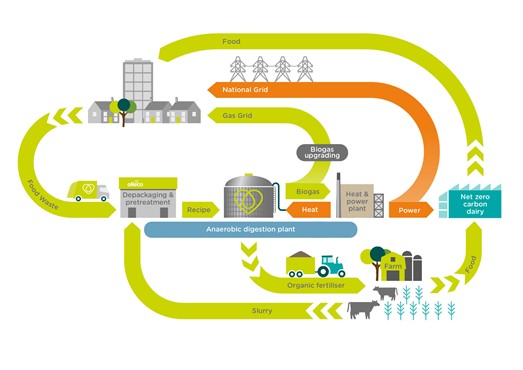
Food waste
The best thing that can happen to food is that it makes it to our plates and is enjoyed.
Avoiding throwing out food that could have been eaten will save you money and help reduce greenhouse gas emissions. However some food waste is inevitable - egg shells, banana skins and tea bags are never going to be on the menu.
The food that is collected for recycling across Buckinghamshire is turned into energy to power our homes and also a high quality fertiliser for use on agricultural land.
The recycling process for food is called anaerobic digestion. It uses micro-organisms to break down food waste in the absence of oxygen, inside an enclosed system. As it breaks down it gives off methane, which is collected and converted into biogas and used to generate electricity. It also creates a nutrient-rich digestate that can be used as a fertiliser for agriculture and in land regeneration.
Did you know the facility outside Aston Clinton produces enough electricity by recycling food to power 12,000 homes.
Aylesbury is where all of Buckinghamshires food waste is sent. There are Anaerobic Digesters at Westcott and Aston Clinton in Buckinghamshire.
16,000 tonnes of food is recycled from Buckinghamshire homes each year.
The anaerobic digestion process
-
Food waste is delivered to the anaerobic digestion facility, where it is tipped into a sealed reception area.
-
The food waste is then ground up and passed into the heated digester tanks.
-
Methane produced in the tanks is used to generate electricity, which is fed into the National Grid to power homes and businesses.
-
The nitrogen-rich liquid left at the end of the process is then pasteurised and used as farm fertiliser.
- Find out more about the process here
